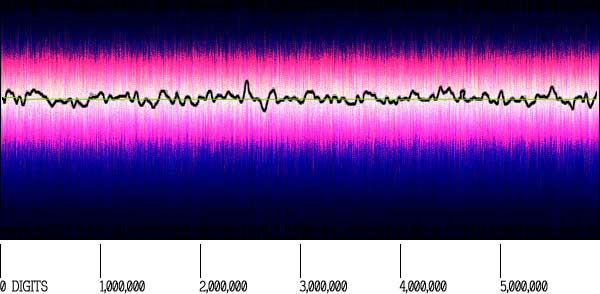I can only do this for a little while because it really hurts my head to do it for long (it's just a lot to concentrate on) but I've been doing a little mapping of changes in noise patterns inside π this afternoon… What I'm examining initially is how chaotic (or uniform) ranges of π are. For example, the chart below covers the first six million digits of π.

So in short, π is not white noise or random numbers… there is a pattern in there, and there is a signal in there (in my opinion). It's just a matter of figuring out how to extract it.



Post a Comment